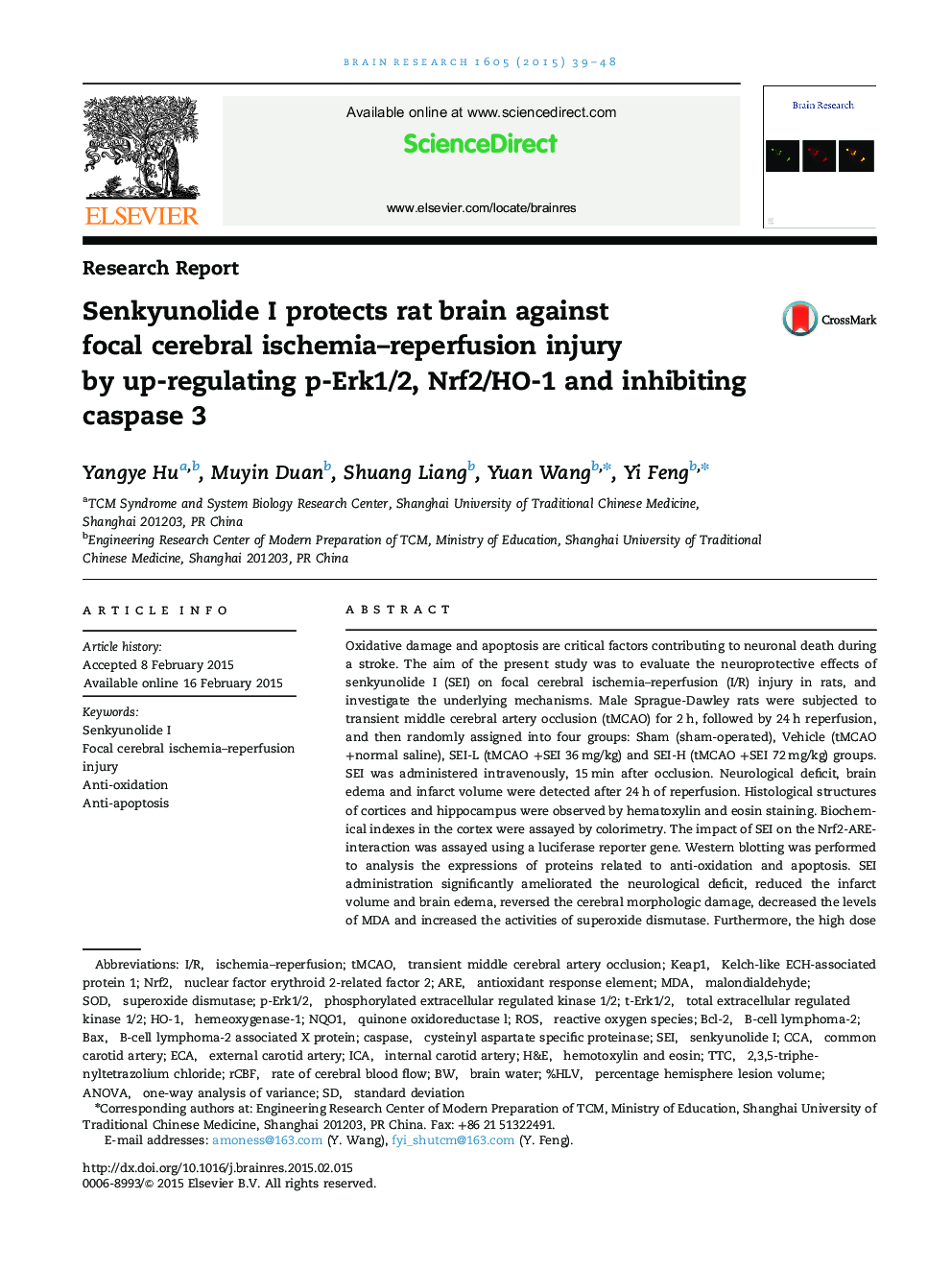| Article ID | Journal | Published Year | Pages | File Type |
|---|---|---|---|---|
| 4323869 | Brain Research | 2015 | 10 Pages |
•Administration of SEI lessened cerebral ischemia/reperfusion injury in rats.•SEI promoted Nrf2/ARE pathway activation in HEK 293T/pGF1-ARE cells.•The anti-oxidative effect of SEI was mediated by activating Erk/Nrf2/ARE pathway.•Anti-apoptosis may be involved in neuroprotection of SEI.
Oxidative damage and apoptosis are critical factors contributing to neuronal death during a stroke. The aim of the present study was to evaluate the neuroprotective effects of senkyunolide I (SEI) on focal cerebral ischemia–reperfusion (I/R) injury in rats, and investigate the underlying mechanisms. Male Sprague-Dawley rats were subjected to transient middle cerebral artery occlusion (tMCAO) for 2 h, followed by 24 h reperfusion, and then randomly assigned into four groups: Sham (sham-operated), Vehicle (tMCAO +normal saline), SEI-L (tMCAO +SEI 36 mg/kg) and SEI-H (tMCAO +SEI 72 mg/kg) groups. SEI was administered intravenously, 15 min after occlusion. Neurological deficit, brain edema and infarct volume were detected after 24 h of reperfusion. Histological structures of cortices and hippocampus were observed by hematoxylin and eosin staining. Biochemical indexes in the cortex were assayed by colorimetry. The impact of SEI on the Nrf2-ARE-interaction was assayed using a luciferase reporter gene. Western blotting was performed to analysis the expressions of proteins related to anti-oxidation and apoptosis. SEI administration significantly ameliorated the neurological deficit, reduced the infarct volume and brain edema, reversed the cerebral morphologic damage, decreased the levels of MDA and increased the activities of superoxide dismutase. Furthermore, the high dose SEI could significantly activate the Nrf2/ARE pathway by up-regulating the phosphorylation of Erk1/2 and inducing Nrf2 nuclear translocation with enhanced HO-1 and NQO1 expressions. Additionally, treatment with SEI remarkably promoted the ratio of Bcl-2/Bax and inhibited the expressions of cleaved caspase 3 and caspase 9. These results suggest that the neuroprotective mechanisms of SEI are associated with its anti-oxidation and anti-apoptosis properties.
